When considering flooring options for a home or office, polyester carpet often emerges as a popular choice due to its various attributes. Excelling in affordability and available in a wide spectrum of colors and patterns, polyester carpeting offers a tempting combination of style and cost-effectiveness.
However, like any material, it comes with its own set of advantages and disadvantages.
In this comprehensive overview, we’ll delve into the pros and cons of polyester carpets, giving you focused insight into whether it’s the right choice for your space.
Pros of Polyester Carpet
Durability
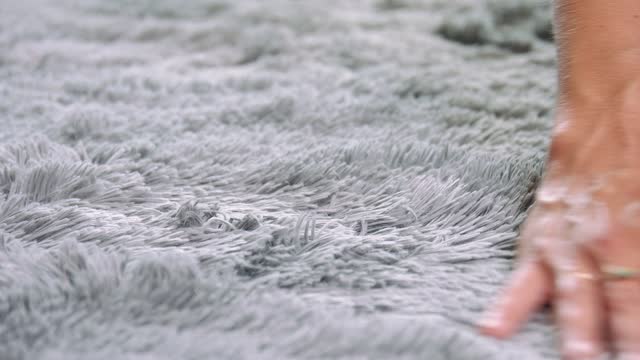
Polyester carpets are renowned for their ability to withstand common household stains, making them an ideal choice for busy households or commercial spaces prone to spills.
The synthetic fibers of polyester have a natural resistance to moisture absorption, which helps prevent stains from setting in, allowing for easier cleanup.
Moreover, polyester carpeting is also resistant to fading. This characteristic ensures that the vibrant colors and intricate patterns remain intact even in areas exposed to direct sunlight or bright lighting.
The enduring visual appeal of polyester carpeting, combined with its stain resistance, makes it a practical option for high-traffic areas where durability is of utmost concern.
Soft Texture
The tactile experience of flooring is just as important as its visual appeal, and polyester carpets score high marks in this aspect. Known for its soft and luxurious texture, polyester fibers provide a plush underfoot feeling that adds a layer of comfort to any room.
This coziness not only enhances the aesthetic but also contributes to an inviting sensory experience, which can be particularly appealing in living spaces and bedrooms where comfort is paramount.
The softness of polyester is due to the material’s high pile density, which also contributes to a warmer ambiance, acting as an insulator which can be a benefit in cooler climates.
The supple nature of polyester carpets makes them an excellent choice for households looking to create a relaxing and serene environment.
Variety of Styles
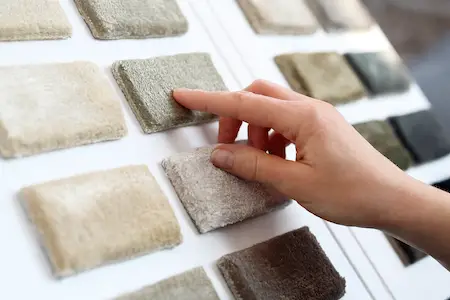
Polyester carpets cater to a diverse spectrum of aesthetic preferences, offering an impressive selection of hues, patterns, and textures that can complement any decor style.
The versatility of polyester fiber allows manufacturers to produce carpets in a vast array of colors, ranging from neutral tones that evoke a sense of tranquility to bold shades that make a statement.
Additionally, advancements in carpet manufacturing technology have enabled the creation of intricate and stylish patterns that can serve as a focal point in a room or enhance the existing interior design elements.
From minimalist geometric designs to elaborate floral motifs, there is a polyester carpet style suitable for classic, contemporary, or even eclectic decorating schemes.
This breadth of options enables homeowners and interior designers alike to tailor the flooring to the specific mood or character they wish to infuse into the space, making polyester carpets a flexible solution to floor covering needs.
Affordability
One of the most compelling attributes of polyester carpets is their affordability, making them a cost-effective alternative to more expensive fibers like wool or nylon. This affordability does not come at the expense of aesthetic appeal or durability, as polyester offers a remarkable balance of quality and value.
The intrinsic properties of polyester fibers, such as their synthetic origin and ease of production, contribute to lower manufacturing costs.
This economic efficiency allows for budget-friendly pricing that is accessible to a broader range of consumers.
Furthermore, polyester’s stain-resistant nature and the minimal maintenance it requires can lead to additional savings over time, reducing the need for frequent professional cleanings.
By opting for polyester carpets, homeowners can enjoy the luxury and style of soft, durable, and vibrant floor coverings without the financial strain often associated with higher-end materials.
Eco-Friendliness
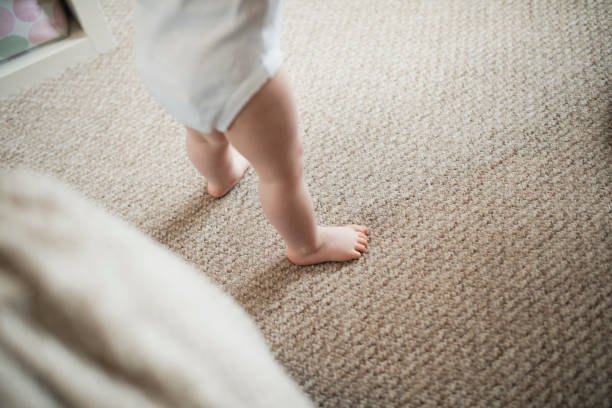
Polyester carpets not only benefit homeowners in terms of aesthetics and cost-effectiveness but also make a positive impact on the environment. A significant portion of polyester fibers used in carpet manufacturing is sourced from recycled materials, such as PET bottles.
This eco-friendly approach diverts millions of these non-biodegradable containers from landfills each year, reducing overall waste.
Additionally, the production process for recycled polyester is generally more energy-efficient compared to refining new raw materials, which further diminishes the environmental footprint of polyester carpet production.
By choosing carpets made from recycled polyester, consumers actively contribute to the conservation of resources and the promotion of a circular economy.
Not only do they obtain a product that is both durable and attractive, but they also support sustainable practices that help protect the planet for future generations.
Cons of Polyester Carpet
Susceptibility to Flattening

One of the main drawbacks of polyester carpet is its susceptibility to flattening. The fibers of polyester are inherently less resilient than those of some other materials, such as nylon, making them prone to crushing under the weight of heavy furniture or the consistent pressure found in high-traffic areas. Over time, this can
Lead to a loss of loft and the appearance of matted pathways that significantly detract from the carpet’s aesthetic appeal.
While this characteristic of polyester fibers doesn’t impact its functionality, it does mean that the carpet may require replacement or more frequent rearrangement of furniture to maintain a fresh, full appearance.
Homeowners should consider the placement and use of polyester carpets carefully to avoid these issues and preserve the lifespan of their flooring.
Less Resilient: Shorter Lifespan Compared to Nylon
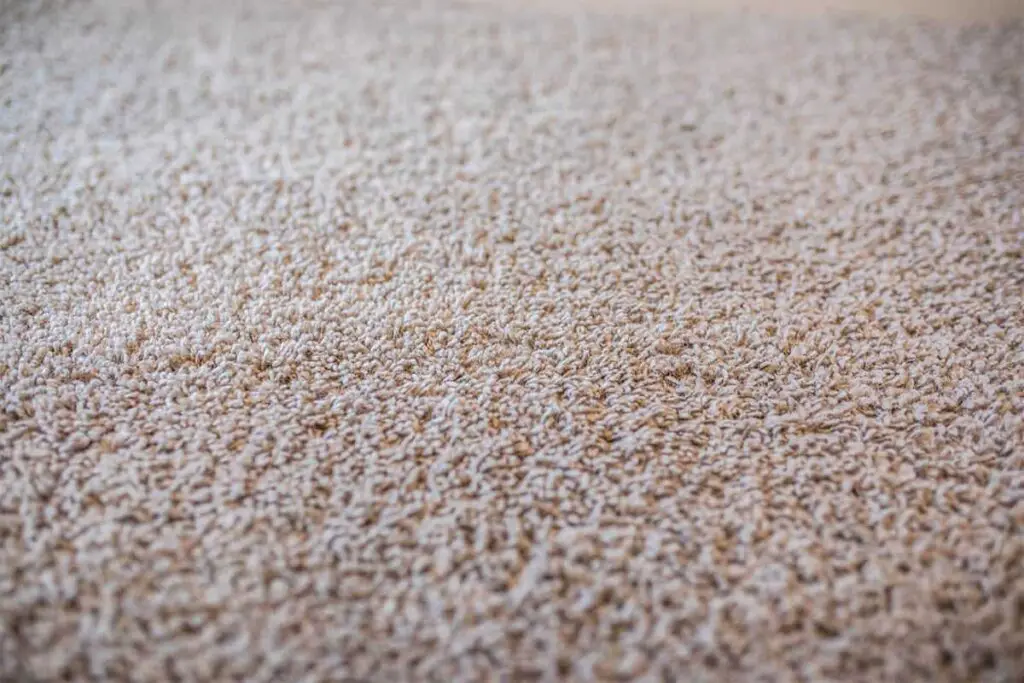
Polyester carpets, while offering various advantages, do fall short in terms of resilience when compared to their nylon counterparts. Nylon’s molecular structure provides it with a superior ability to ‘bounce back’ from compression, which is why it’s favored in places where durability and longevity are paramount.
In contrast, polyester fibers have a lower elasticity, meaning they do not recover as well from the constant trampling of foot traffic or the persistent weight of furniture.
This susceptibility to crushing can cause polyester carpets to show signs of aging prematurely, necessitating earlier replacement than would be needed with nylon carpeting.
Consequently, for areas of the home that are subject to frequent use or where furniture is moved less often, considering a nylon carpet might offer better long-term value despite the initially higher investment.
Consumers must weigh these factors carefully, balancing their budget against their expectations for carpet longevity and appearance retention.
Oil-Based Stains: Distinct Challenges in Removal
When it comes to stains on polyester carpets, one of the most challenging types to address is those that are oil-based. These include spills from substances like cooking oils, motor oils, and even certain beauty products.
The synthetic fibers of polyester have an inherent affinity for oily substances, leading to a propensity for such stains to become deeply set in the carpet pile.
This tenacious bonding makes the extraction process considerably more difficult than with other common household spills. Traditional water-based cleaning methods often fail to break down the oil molecules, which necessitates the use of specialized solvents or detergents designed for combatting grease.
The cleaning process must also be approached with care, as aggressive scrubbing can exacerbate the issue, spreading the stain and further entrenching the oil into the fibers.
Professional cleaning services are frequently sought after for their expertise in handling these stubborn stains, employing techniques and products honed specifically for the task.
Notably, regular maintenance and immediate attention to oil-based spills can mitigate the severity of staining, but the inherent vulnerability of polyester to such incidents remains a point of consideration for prospective buyers.
Non-Biodegradable
Polyester’s non-biodegradability poses a significant challenge in terms of environmental sustainability and waste management. Being a synthetic material derived from petrochemicals, it does not break down in a natural environment for several decades, if at all.
This resiliency against decomposition, while advantageous for durability, leads to an accumulation of waste in landfills. Furthermore, as polyester carpets reach the end of their lifecycle, they often become contributors to this growing problem.
Despite polyester’s amenability to recycling initiatives, the reality is that a significant portion of polyester carpets do not enter recycling streams.
Instead, they persist in the environment, adding to the already critical issue of plastic pollution. The matter is further complicated by the fact that, even if recycled, polyester requires an energy-intensive process to break it down and reformulate it into a reusable state.
This process itself can contribute to carbon emissions and resource depletion, prompting concerns related to the full environmental footprint of polyester carpets.
Heat Sensitivity
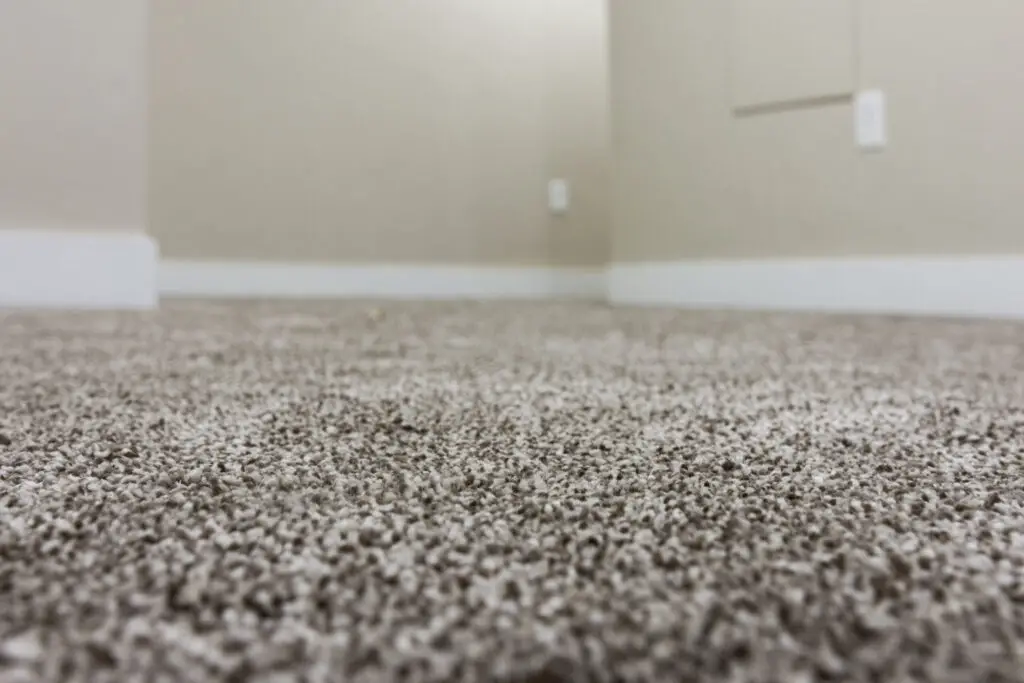
Polyester’s chemical structure imbues it with particular susceptibilities, one of which is its sensitivity to high temperatures. This synthetic fiber, while celebrated for its durability in wear, reveals a notable weakness when exposed to intense heat sources.
High heat can compromise the integrity of polyester fibers, potentially causing them to melt or distort. This propensity is due to the thermoplastic nature of the material, meaning it softens upon heating and hardens upon cooling.
This characteristic can cause polyester carpet fibers to relinquish their taut, structured form, leading to a loss of aesthetic appeal and functional quality.
In practical terms, this means that environments with high-temperature variations, direct sunlight, or proximity to heating elements may not be suited to polyester carpeting.
Polyester’s low melting point relative to other synthetic fibers further complicates its placement and care.
Consumers should consider this when installing polyester carpets in areas such as sunrooms, or kitchens, where the risk of encountering hot items or spills is greater.
Related Topics:
Conclusion
So, polyester carpets stand as a multifaceted flooring option that draws homeowners with its plethora of designs, easy maintenance, and gentle touch underfoot, matched with an amiable price point.
The environmental benefits of recycled polyester further cast this material in a favorable light for eco-conscious consumers. Yet, this should be weighed against the tendency for the fibers to flatten over time, their vulnerability to oil-based stains, and their reaction to high temperatures.
Given its attributes and detractions, the suitability of polyester carpeting hinges upon the specific needs, expectations, and usage within a space.
When balanced appropriately, polyester carpets can serve as both a practical and stylish flooring solution, all while aligning with budgetary considerations and design ambitions.
FAQs
How does exposure to sunlight affect polyester carpets over time?
Polyester carpets, due to their chemical makeup, are susceptible to degradation under prolonged exposure to sunlight. UV rays can lead to fading of the carpet’s color and may accelerate the weakening of the fibers, potentially causing them to become brittle and lose their original texture and resilience.
Are polyester carpets resistant to stains and easy to clean?
Generally, polyester carpets are known for their resistance to water-based stains and are relatively easy to clean. However, they tend to absorb oil-based spills, which can be more challenging to remove. Regular vacuuming and prompt attention to spills can help maintain their appearance.
Can polyester carpets be considered an eco-friendly flooring option?
Yes, polyester carpets can be eco-friendly, particularly when they are made from recycled PET (polyethylene terephthalate) materials, such as plastic bottles. This reduces waste in landfills and requires less energy to produce, making them a more sustainable choice compared to some other synthetic fibers.

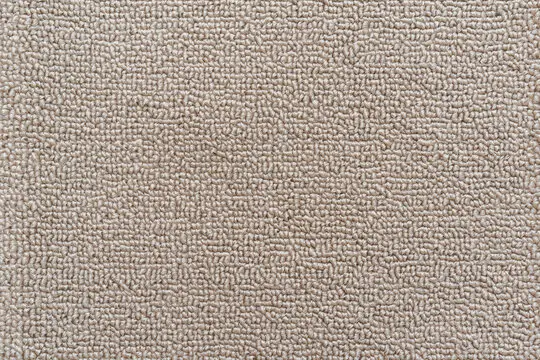
1 thought on “Exploring The Polyester Carpet Pros And Cons”